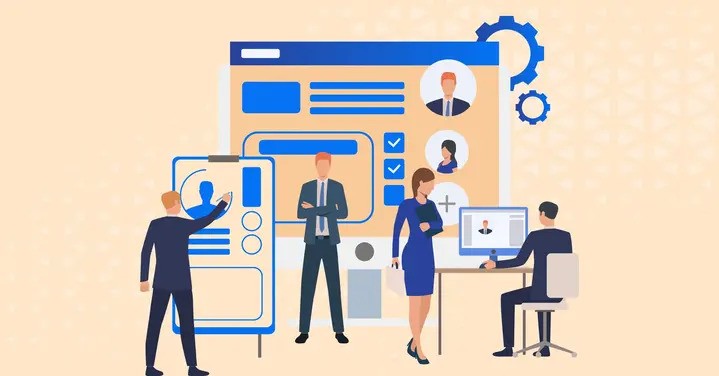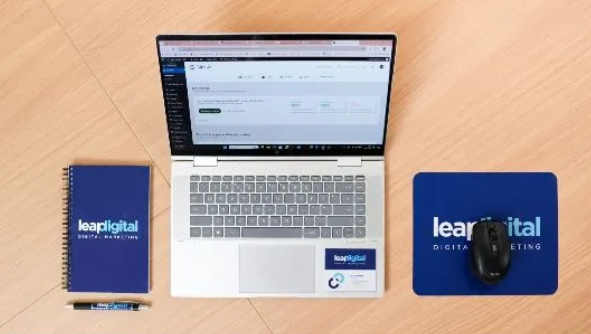Staffing software is revolutionizing how businesses manage the hiring process. As companies face increasing competition for top talent, leveraging the right tools to streamline recruitment has become critical. This article will walk you through the ins and outs of staffing software, its key benefits, and the trends shaping the future of talent acquisition.
What is Staffing Software?
Staffing software refers to digital solutions that automate various tasks involved in the hiring process. From posting job ads to tracking applicants, staffing software helps businesses efficiently manage recruitment, reducing manual effort and improving accuracy.
Different Types of Staffing Software
Staffing software can be categorized based on the specific tasks it handles, offering a wide range of solutions for different recruitment needs.
1. Applicant Tracking Systems (ATS)
Top ats systems is designed to help companies track and manage candidates throughout the hiring process, from application submission to onboarding.
2. Recruitment Management Systems (RMS)
RMS provides end-to-end solutions for sourcing, screening, and hiring candidates, offering more robust features compared to an ATS.
3. Onboarding Software
Onboarding tools ensure new hires are smoothly integrated into the company by managing documents, compliance, and training.
4. Workforce Scheduling Tools
These solutions are focused on managing employee schedules and hours, ideal for companies in industries with shift work like hospitality or healthcare.
Key Features of Staffing Software
Choosing the right staffing software involves considering the features that align best with your business needs:
1. Automated Job Postings
This feature allows recruiters to post jobs across multiple platforms with a single click, saving time and ensuring broad reach.
2. Resume Parsing
Software with resume parsing capabilities can quickly extract key information from resumes, helping recruiters screen applicants more efficiently.
3. Integrated Communication Tools
Staffing software often includes built-in messaging features, making it easier to communicate with candidates and schedule interviews.
4. Customizable Workflows
The ability to customize workflows allows businesses to adapt the recruitment process to meet their unique hiring requirements.
5. Reporting and Analytics
Advanced reporting tools offer insights into recruitment metrics like time-to-fill, helping businesses refine their hiring strategies based on data.
Benefits of Using Staffing Software
Implementing staffing software brings a range of benefits that improve recruitment efficiency and overall business performance.
1. Faster Hiring
Automation of repetitive tasks like screening resumes and scheduling interviews allows recruiters to move candidates through the hiring process more quickly.
2. Enhanced Collaboration
Staffing software centralizes recruitment information, making it easier for teams to collaborate and stay aligned on hiring decisions.
3. Better Candidate Experience
Timely communication and a streamlined process make a positive impression on candidates, enhancing their overall experience and increasing the likelihood of securing top talent.
4. Data-Driven Hiring Decisions
With access to detailed analytics and reporting, businesses can make more informed decisions, leading to higher-quality hires.
How AI is Changing Staffing Software
Artificial Intelligence (AI) is increasingly being integrated into staffing software, adding new layers of functionality that enhance the hiring process.
1. Automated Candidate Screening
AI can help by automatically screening applicants based on keywords in their resumes, ensuring that only the most qualified candidates move forward.
2. Predictive Analytics
AI can analyze historical hiring data to predict which candidates are most likely to succeed in a role, helping businesses make smarter recruitment choices.
3. Chatbots for Candidate Interaction
AI-powered chatbots can engage with candidates by answering their queries, providing updates, and scheduling interviews, offering a seamless recruitment experience.
Cloud-Based vs. On-Premise Staffing Software
Businesses often choose between cloud-based and on-premise staffing software, depending on their size, budget, and security needs.
1. Cloud-Based Staffing Software
Cloud-based software is hosted on the internet, allowing recruiters to access it from anywhere, making it a flexible and scalable solution.
2. On-Premise Staffing Software
On-premise software is installed on local servers, offering greater control over data but often requiring a significant upfront investment and ongoing maintenance.
How to Choose the Right Staffing Software
Selecting the best staffing software depends on several factors, including:
1. Business Size
Small businesses may opt for simpler solutions like an ATS, while larger companies with more complex needs might require a comprehensive RMS.
2. Budget
Cloud-based software typically has lower upfront costs but ongoing subscription fees, whereas on-premise software often requires a larger initial investment but no recurring fees.
3. Ease of Use
Ensure that the software is intuitive and user-friendly to promote adoption by HR teams and hiring managers.
4. Customer Support
Good customer support is crucial, so make sure the provider offers assistance with implementation, training, and ongoing maintenance.
Top Staffing Software Solutions for 2024
As staffing software continues to evolve, here are some of the top solutions to consider in 2024:
1. Greenhouse
Greenhouse stands out for its customization options and advanced analytics, making it a top choice for large enterprises seeking detailed hiring insights.
2. Workable
Workable is known for its intuitive interface and AI-driven tools, making it a great option for mid-sized businesses aiming to improve their recruitment processes.
3. JazzHR
JazzHR is budget-friendly and offers all the essential features small businesses need to manage recruitment without the high cost.
Challenges in Implementing Staffing Software
While staffing software offers many advantages, there are also some challenges to consider:
1. High Initial Costs
On-premise solutions, in particular, can be costly to implement and maintain, which may be prohibitive for small businesses.
2. Employee Resistance
Introducing new software can lead to resistance from employees, especially if they’re not tech-savvy. Training and clear communication can help ease this transition.
Trends in Staffing Software for 2024
Several key trends are shaping the future of staffing software:
1. AI and Machine Learning Integration
AI is becoming more deeply integrated into staffing software, automating tasks like screening and candidate matching to make the hiring process faster and more efficient.
2. Mobile-First Design
As more candidates use their mobile devices to search for jobs, staffing software is becoming increasingly mobile-friendly, allowing candidates to apply on the go.
3. Social Media Integration
Staffing software is increasingly integrating with social media platforms, helping recruiters tap into passive candidate pools and broaden their reach.
Conclusion
Staffing software is an indispensable tool for businesses looking to improve recruitment efficiency and find top talent. With features like automation, AI integration, and cloud-based flexibility, staffing software is transforming how companies manage their hiring processes.
FAQs
1. What does staffing software do?
Staffing software automates various recruitment tasks, from job postings to applicant tracking, helping businesses streamline their hiring processes.
2. How does AI enhance staffing software?
AI improves staffing software by automating resume screening, candidate matching, and even predictive analytics to help recruiters make better hiring decisions.
3. Is staffing software suitable for small businesses?
Yes, staffing software can benefit businesses of all sizes, offering streamlined processes that save time and improve efficiency.
4. What’s the difference between cloud-based and on-premise staffing software?
Cloud-based software is hosted online, offering greater flexibility and scalability, while on-premise software is installed locally and offers more control over data.
5. Why is mobile optimization important for staffing software?
Mobile optimization allows candidates to apply easily from their smartphones, ensuring that businesses don’t miss out on top talent who prefer using mobile devices.









